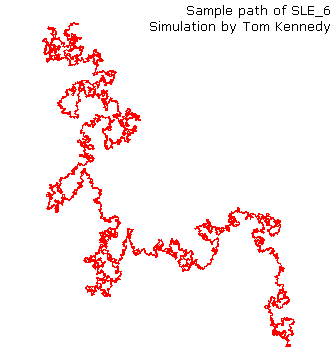
Stochastic Activity Month
February 8
2012
Lecture Afternoon
""Applications for Scaling Limits"

| SPEAKERS | REGISTRATION |
SPEAKERS
Ronald Meester (VU Amsterdam)
Florian Simatos (CWI-Eurandom)
Pieter Trapman (Stockholm Uinversity)
REGISTRATION
For organizational purposes, please register online: Registration form
| 14.00 - 15.00 | Ronald Meester | Scaling limits and continuous curves in fractal percolation |
| 15.00 - 15.30 | Coffee/tea break | |
| 15.30 - 16.30 | Pieter Trapman | The growth of the infinite long-range percolation cluster and an application to spatial epidemics |
| 16.30 - 17.30 | Florian Simatos | On the scaling limits of regenerative processes |
Florian Simatos
On the scaling limits of regenerative processes
In this talk I will first
present a general result that relates the convergence of regenerative processes
to the convergence of their excursions. I will then present two non-trivial
applications of this method that arise in queueing theory.
(this talk is based on on-going joint works with Sem Borst, Amaury Lambert and
Bert Zwart)
Pieter Trapman (University of Stockholm)
The growth of the infinite long-range percolation cluster and an application to spatial epidemics
Consider long-range percolation on
$\mathbb{Z}^d$, where the probability that two vertices at distance $r$ are
connected by an edge is given by $p(r) = 1-\exp[-\lambda(r)] \in (0,1)$ and the
presence or absence of different edges are independent.
Here $\lambda(r)$ is a strictly positive, non-increasing regularly varying
function. I will discuss the growth of the number of vertices that are within
graph-distance $k$ of the origin, $|\mathcal{B}_k|$, as $k \to \infty$.
Conditioned on the origin being in the (unique) infinite cluster, non-empty
classes of non-increasing regularly varying functions are identified, for which
respectively
- $|\mathcal{B}_k|^{1/k} \to \infty$ almost surely,
- there exist $1 <a_1 < a_2 < \infty$ such that $\lim_{k\to \infty} \mathbb{P}(a_1<|\mathcal{B}_k|^{1/k}<
a_2) = 1$,
- $|\mathcal{B}_k|^{1/k} \to 1$ almost surely.
This result can be applied to spatial epidemics. In particular, regimes are
identified for which the basic reproduction number, $R_0$, which is an important
quantity for epidemics in unstructured populations, may have a useful
counterpart in spatial epidemics.
this talk is based on:
- P. Trapman (2010), The growth of the infinite long-range percolation cluster,
Annals of Probability.
- S. Davis, P. Trapman, H. Leirs, M. Begon and J.A.P. Heesterbeek (2008), The
abundance threshold for plague as a critical percolation phenomenon, Nature.
Ronald Meester ( VU Amsterdam)
Scaling limits and continuous curves in fractal percolation
Scaling limits are distributional
limits, whereas fractal percolation is a process which creates a random fractal
as a pointwise limit. In this lecture I will explain how ideas in scaling limits
can be used to obtain information about the (pointwise) limiting set in fractal
percolation, especially about the existence of Holder continuous curves.
Although the subject of scaling limits in general tends to be rather technical,
the lecture will be very non-technical.